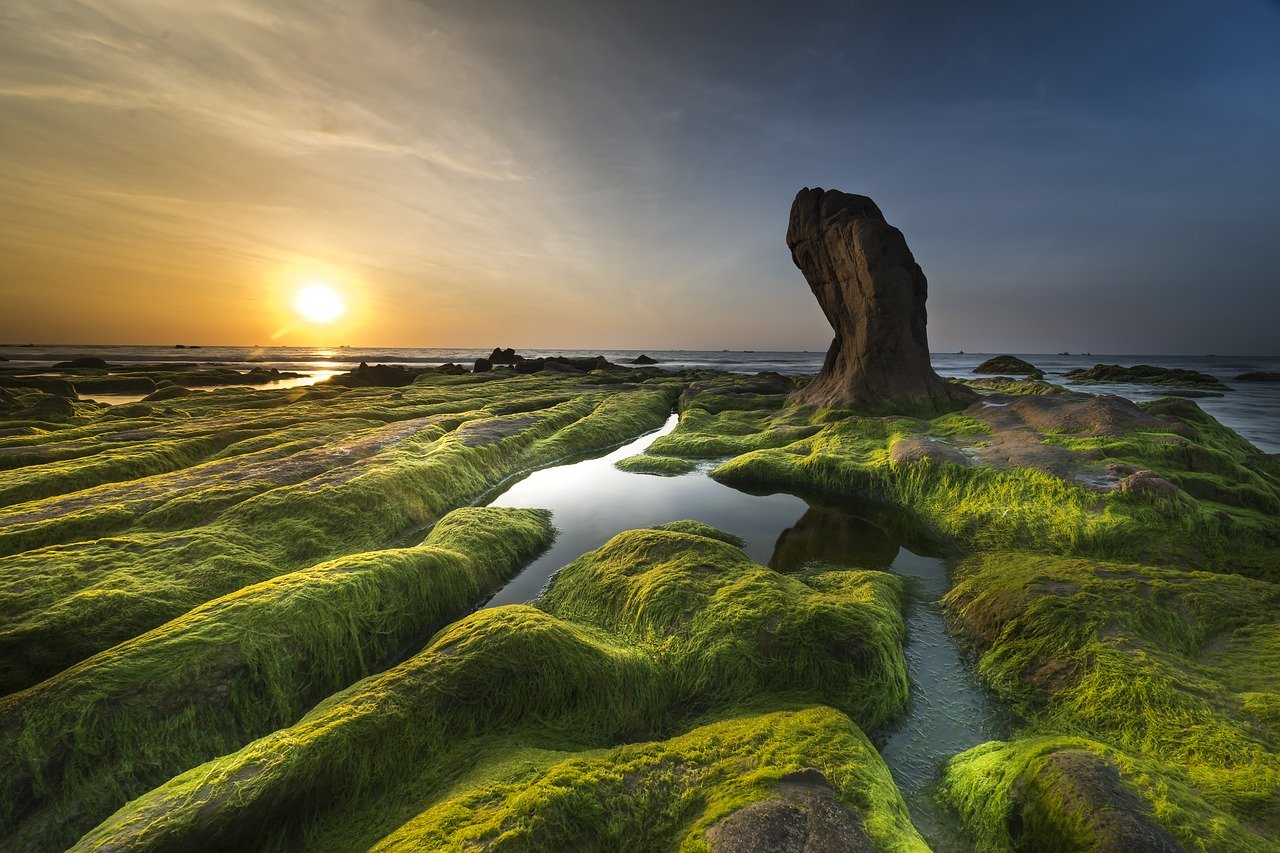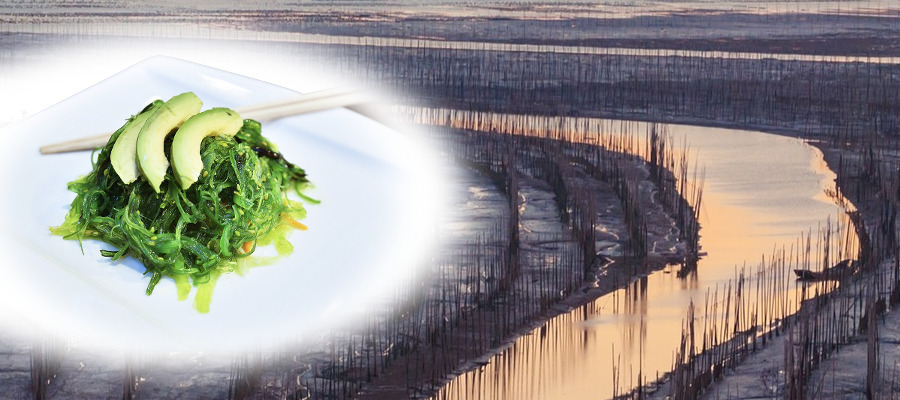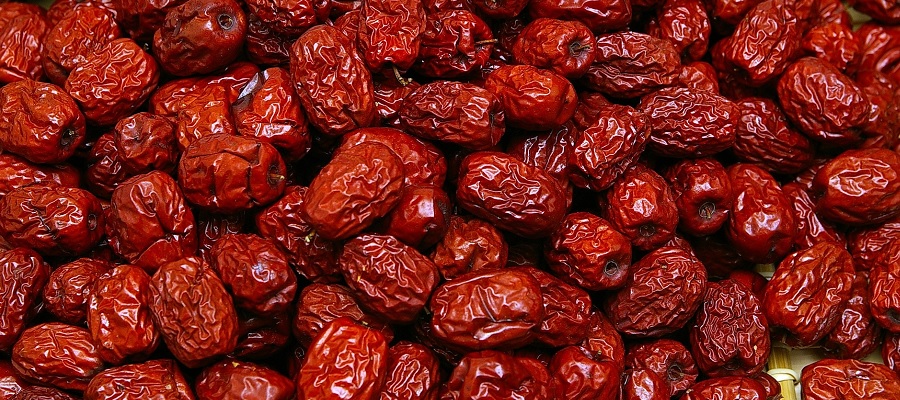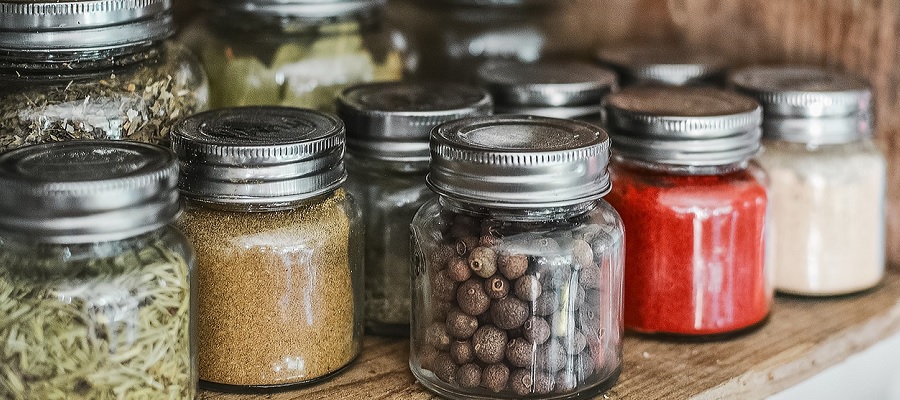The underwater seaweed vegetable bed
colored seaweed grows around the globe in Neptune's garden. Examples include brown seaweed, red seaweed, green seaweed, blue-green seaweed, blue-green seaweed. Although this vegetable patch is below sea level, man reaps colorful vegetables here as well. If you like Asian dishes like sushi, you've probably had seaweed leaves on your spoon before.
Seaweed as a food supplement
 Many vitamin tablets and dietary supplements are made from algae, but the colorful "sea foliage" should be used wisely: The particularly high iodine content has a bad effect on the thyroid gland. The question to be considered, if you want to supplement your food with tablets or powders from algae, is answered here in the further article.
Many vitamin tablets and dietary supplements are made from algae, but the colorful "sea foliage" should be used wisely: The particularly high iodine content has a bad effect on the thyroid gland. The question to be considered, if you want to supplement your food with tablets or powders from algae, is answered here in the further article.
What kind of plant is it?

Source: Pixabay
In the above-mentioned algae species, two groups are distinguished: macroalgae are what are normally presented under marine algae, typically underwater plants. These include the brown, red and green algae, which are found in many Asian dishes.  Blue algae, which are also called blue-green algae, are actually not algae, but only a special type of bacteria. The peculiarity of them is that they are extracted like plants with the help of chlorophyll energy. The chlorophyll gives them the blue-green color. Many people have already seen blue algae since they are formed in calm waters that are exposed to light. The owners of the aquariums condemn them, as they cling to the walls of the glass and thus gloom the view of the underwater world green.
Blue algae, which are also called blue-green algae, are actually not algae, but only a special type of bacteria. The peculiarity of them is that they are extracted like plants with the help of chlorophyll energy. The chlorophyll gives them the blue-green color. Many people have already seen blue algae since they are formed in calm waters that are exposed to light. The owners of the aquariums condemn them, as they cling to the walls of the glass and thus gloom the view of the underwater world green.
Europeans who feed like Asians
 In Japan, traditionally large quantities of algae land in the pot. This is because the lack of large farming areas and the direct availability of the algae along the long coastlines of the Japanese islands have been invoking the use of marine vegetables for centuries. As healthy as the high-fiber and low-fat Asian cuisine is, the iodine content of some of its algae far exceeds anything the ingredients of European cuisine have to offer. The brown algae kombu, for example, has a lot to offer: it can store amazing amounts of iodine. The iodine concentration in combination leaves is 40,000 times that of normal seawater, and just one twentieth of a gram of dried leaves is enough to cover a person's daily intake of iodine. The Federal Ministry for Health Protection and Veterinary Medicine (BgVV) was called for by these surprisingly high numbers. A sudden, excessive supply of the mineral can have undesirable harmful consequences: so-called "functional autonomies" can be activated in the thyroid gland. These are nodules (autonomous adenomas), which form especially during prolonged deficient iodine intake. If these areas of the thyroid, which are "thirsty" for iodine, are suddenly supplied with an excess of iodine, they begin to produce thyroid hormones out of bounds and ligaments. Acute thyroid hyperfunction (hyperthyroidism) can be the result.
In Japan, traditionally large quantities of algae land in the pot. This is because the lack of large farming areas and the direct availability of the algae along the long coastlines of the Japanese islands have been invoking the use of marine vegetables for centuries. As healthy as the high-fiber and low-fat Asian cuisine is, the iodine content of some of its algae far exceeds anything the ingredients of European cuisine have to offer. The brown algae kombu, for example, has a lot to offer: it can store amazing amounts of iodine. The iodine concentration in combination leaves is 40,000 times that of normal seawater, and just one twentieth of a gram of dried leaves is enough to cover a person's daily intake of iodine. The Federal Ministry for Health Protection and Veterinary Medicine (BgVV) was called for by these surprisingly high numbers. A sudden, excessive supply of the mineral can have undesirable harmful consequences: so-called "functional autonomies" can be activated in the thyroid gland. These are nodules (autonomous adenomas), which form especially during prolonged deficient iodine intake. If these areas of the thyroid, which are "thirsty" for iodine, are suddenly supplied with an excess of iodine, they begin to produce thyroid hormones out of bounds and ligaments. Acute thyroid hyperfunction (hyperthyroidism) can be the result.
Japanese are (almost) resistant
Because of their high consumption of algae, Japanese and other Asians have virtually no autonomous nodes, since they have a lot of iodine. Therefore, they also have no or at least fewer problems with algae consumption. But even for Asians, it can sometimes be too much of a good thing: in some parts of the Asian coast, there are astonishingly many people with a goiter, as they are also increasing in the iodine alpine countries. The goiter, an enlargement of the thyroid gland, is actually an iodine deficiency disease. It can also be triggered by an extremely high iodine supply. In this case, the system responsible for absorbing the iodine into the thyroid gland is out-pulsed by the iodine flux in such a way that it briefly adjusts the recording. This leads to an iodine deficiency in the thyroid, despite the iodine supply in the blood. Caution should be exercised in pregnant women. This effect, also known as the Wolf f-Chaikoff block, can also affect an unborn child of a pregnant woman, which is why she should pay attention to a not too high supply of the element.
This should be taken care of when eating
First of all, one must realize that only a par t of the algae is extremely iodine. Especially brown algae Kombu and Wakame. Kombu is usually boiled in water and the resulting broth forms the basis of most Japanese soups. The solid green leaves of the Wakame are used as a paste in soups as well as for salads. Nori, however, is used for "wrapping wraps" of maki sushi. However, if you do not consume too much of the sushi, you do not have to worry about it because Nori does not have high jodal levels.
t of the algae is extremely iodine. Especially brown algae Kombu and Wakame. Kombu is usually boiled in water and the resulting broth forms the basis of most Japanese soups. The solid green leaves of the Wakame are used as a paste in soups as well as for salads. Nori, however, is used for "wrapping wraps" of maki sushi. However, if you do not consume too much of the sushi, you do not have to worry about it because Nori does not have high jodal levels.
The iodine content of the algae varies not only from species to species, but also varies according to harvest time and growth location. In addition, the algae lose up to 87% of the total amount of the egg. However, since the proposed quantity of iodine in the dry weight of the algae is sometimes 20 to 195 times the limit, the problem should not be reduced.
The BgVV considers the consumption of algae with more than 20 mg of iodine in one kilogram of dried algae as questionable. The ministry calls for a declaration requirement of the iodine content on the packages, but this is still not in force. In the September 2002 edition, Stiftung Warentest reported on various algae products purchased in Germany, which they investigated according to iodine content and other criteria. With three out of 23 products, the iodine content was so high that the foundation abdicated from consumption.
Are microalges a remedy and a foodstuff for the future?

Source: Pixabay
Speaking of microalgae, they are mainly the species Aphanizomenon flos-aquae (also called "AFA-Alge"), Chlorella and Spirulina. This is in common with the fact that many myths are riddled with the protozoans, often referred to as "Uralgen". Because of their protein richness and the fact that they do not need cultivation for arable land and how plants use photosynthesis to produce their own needs for biological building blocks, many are regarded as a solution to the dietary problem of a constantly growing world population. Although this idea is not entirely new, previous efforts have not succeeded in the large-scale cultivation of algae. The so called microalgae mentioned, above all the AFA-algae, also serve as the basis for numerous tablets and powders which are sold as nutritional supplements. The "Uralgen" is often, more or less explicitly, an efficacy in numerous diseases, including cancer and AIDS. The BgVV and the Federal Ministry of Medicines and Medical Devices (BfArM) point out that these allegations are not sustainable according to current knowledge.
The so called microalgae mentioned, above all the AFA-algae, also serve as the basis for numerous tablets and powders which are sold as nutritional supplements. The "Uralgen" is often, more or less explicitly, an efficacy in numerous diseases, including cancer and AIDS. The BgVV and the Federal Ministry of Medicines and Medical Devices (BfArM) point out that these allegations are not sustainable according to current knowledge.
Can algae products be medicines?
Any product which is claimed to cure, alleviate, or prevent diseases is legally recognized as a medicine. These, however, require a state authorization which requires proof that the agent actually provides the desired effect and has no harmful effects. Since at present no algal product is authorized as a medicinal product in the Federal Republic, neither of these products can be claimed to have any medicinal effect. In any case, it is advisable to consult a doctor instead of trying to cure yourself or others with an algae product.
Toxic substances in algae
 The issue is explosive because in Canada, toxins (toxins) have been discovered in samples of food supplements containing AFA algae. These are algentoxins, which are produced by the individual cells under suitable conditions.
The issue is explosive because in Canada, toxins (toxins) have been discovered in samples of food supplements containing AFA algae. These are algentoxins, which are produced by the individual cells under suitable conditions.
The main problem here is the substance microcystin, which has a liver-damaging effect and is also considered a tumor promoter. Microcystins themselves are therefore not carcinogenic but increase the effectiveness of carcinogenic substances. In an American study, all of the investigated AFA products contained these microcystins, some of which exceeded the WHO's tolerable maximum concentrations. For this reason, the BgVV advises not to administer AFA algae to children, and recommends a reduction in dose for adults.


